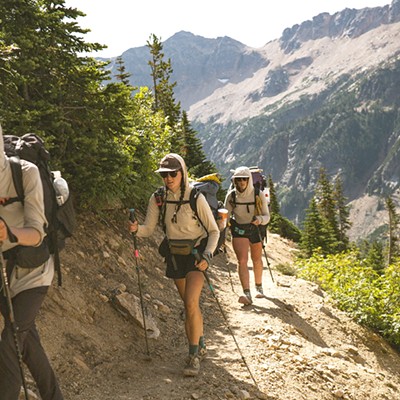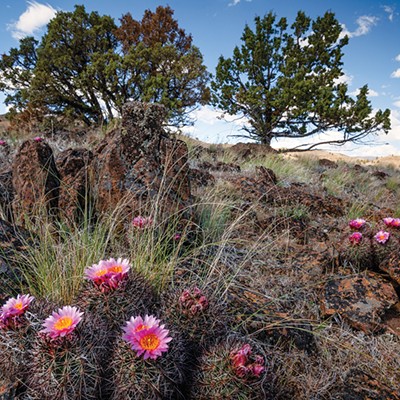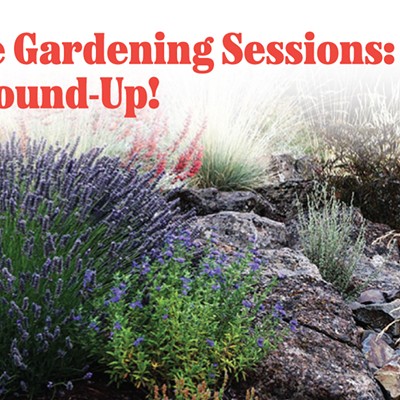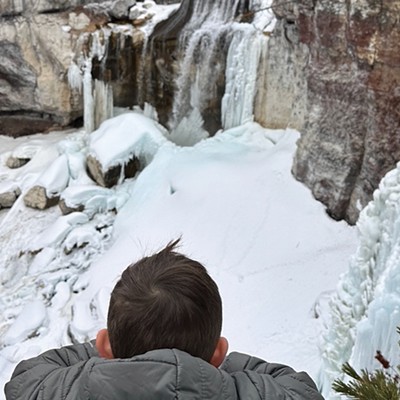Do you have a theme song? Mine is by singer/songwriter Jana Stanfield. The chorus goes like this:
I'm not lost, I am exploring.
Life is an adventure worth enjoying.
Though I may not know where I'm going,
I am not lost, I am exploring.
The way I figure it, I've never been lost, because here I am. Though I may have been slightly misplaced at times. The ability to find one's way in the wilderness is not only useful; it's a survival tool.I'll never forget my introduction to navigation with map and compass. I was attending my very first adventure racing training camp in Estes Park, Colorado, about 11 years ago. The campers were divided into teams of five for an eight-hour nighttime practice race. Professional adventure racer Ian Adamson was on my team. As darkness consumed us, we looked at a topographical map on which checkpoints were plotted. The first checkpoint was a couple of miles away, through the woods. Ian laid his compass on the map illuminated by our headlights and talked about things like declination and handrails as he took a bearing.
He looked up, pointed and said confidently, "We'll head that way to a dry creek bed, follow the gully to the top of a small knoll, and then follow a heading of 220 to the checkpoint."
Somehow, we walked for half an hour through the pitch-black forest straight to the marker. I was amazed. And hooked.
ROGAINING
Orienteering is the sport that involves navigation with map and compass to find control points. A rogaine is a version of orienteering that challenges teams to accumulate as many points as possible in a fixed amount of time by finding control points of various point values. A couple of weeks ago, I competed in the North American Rogaining Championships near Antelope.
Tell people you're competing in a rogaine, and they look at you strangely, especially at your hair.
Rogaining was born in 1976 in Melbourne, Australia, as an offshoot of 24-hour bushwalks organized by the Melbourne University Mountaineering Club. The word "rogaine" was coined from the names of three of the founders, Rod Phillips, Gail Davis Phillips and Neil Phillips (hence RoGaiNe). It can also stand for "Rugged Outdoor Group Activity Involving Navigation and Endurance," but that's a post-facto definition.
After competing in the eight-hour race, I was covered in mud and barbed wire scratches and hanging around the hash house. I happened to sit next to a handsome man with grey hair and an Aussie accent. My friend nudged me and whispered, "That's Neil Phillips." My eyes widened.
I waited for an opening and then I turned to the man and, like a star-struck groupie, asked, "Are you really the "N" in rogaine?"
"Yes," he replied modestly and we continued to have a very pleasant conversation. Neil is still an active rogainer and president of the International Rogaining Federation. He is also a gold miner, which seems appropriate for someone who is good at finding things.
GEOCACHING
If relying on your map and compass skills still seems a little daunting to you, you can whet your appetite for finding things in the middle of nowhere by trying geocaching, an activity that became popular about 10 years ago when affordable hand-held GPS devices hit the market. In 2000, there were only 75 known caches hidden in the world.
On March 8, 2010, geocaching.com, the world's most popular site for geocachers, posted its one-millionth active geocache listing. Today there are four to five million geocachers worldwide and 1,099,763 geocaches in more than 150 countries.
Anyone can hide a geocache, pinpoint its location using a GPS, and then share the cache's location online. Other geocachers obtain geocache coordinates, load them onto their GPS device and head outdoors to find the hidden treasure. A typical cache is an ammo box with a notepad, pencil and a few prizes. When you find a cache, take a prize, leave a prize and sign the book. The best prize I've gotten from a geocache is a yellow Furbie. I tend to leave glow-in-the-dark yoyos.
I competed in a four-hour geocaching event a couple of weeks ago at the Wild Canyon Games. Just as in rogaining, strategy and route planning are key. Sometimes a straight line is not the best way to get from point A to point B.
Occasionally, when I want to go on a hike and have a little extra sense of mission, I look up some caches in the area. The thing about geocaching is that it requires almost no navigational skills. Plug in the coordinates, hit "go to" and follow the arrow. So, I encourage people to pay attention to the terrain and have a plan in case their batteries die!
Next up is the U.S. Orienteering National Championships in Spokane, WA, June 25-30. For more information, visit www.usochamps.org.




















